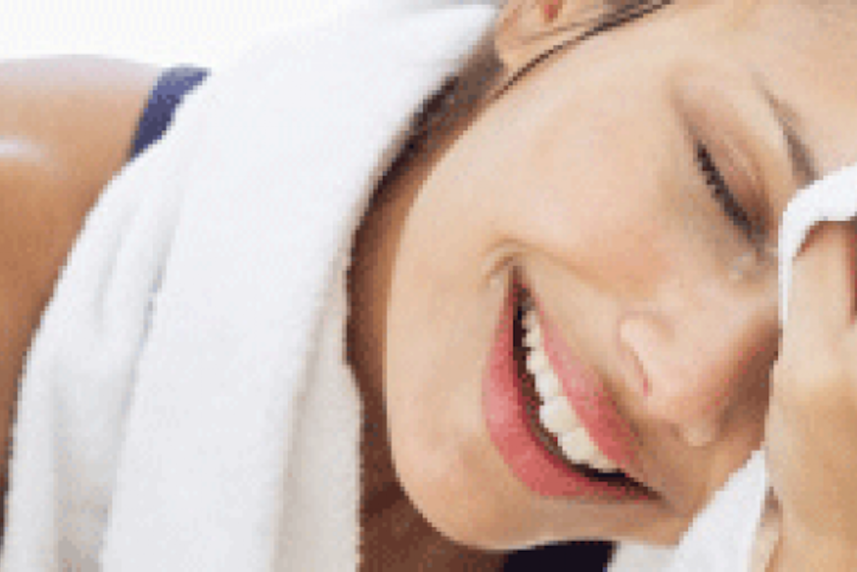Tips for a safe hot workout
How to stay safe during a workout that cranks up the thermostat

Whether you’re drawn to heated workouts because of the chilly temperatures outside or because you’ve heard that they’ll help you lose weight faster, here’s what you need to know. It started with Bikram yoga (at 150 degrees) and has trickled down to Pilates and even boot camp workouts. Fans find a higher temp helps their bodies perform better, but heated workouts aren’t for everyone.
The Pros
A heated environment does allow your body to work into stretches when done gradually and safely during a class. Heated workouts can be good for those that are suffering from joint problems like arthritis because “a warmed environment will keep joint and tissues temperatures warmer,” says Fabio Comana, Faculty Instructor for the National Academy of Sports Medicine.
As a mental plus, when you work out in heated environments you tend to release stress because you’re body doesn’t feel as tense. “It’s why people feel warm and relaxed in a steam room—it’s soothing, it helps release stress hormones,” says Tamal Dodge, a yoga instructor and star of Element: Intro to Yoga.
For athletes, heat acclimatization builds heat tolerance and improves performance. “Ironically, recent evidence has found that being heat acclimatized can even enhance performance in cool climates,” University of Connecticut professor of kinesiology Douglas Casa.
The Cons
The idea that all heated workouts are better for you ignores the fact that “heat stress is a critical consideration. Especially in light of dehydration, before and during exercise, they can be costly to your health, not to mention unhygienic in some environments,” Comana says.
One of the biggest mistakes heading into a heated practice is that people feel they can stretch as deep as they like, as soon as they step in the room, which could lead to injury," Dodge says.
Casa agrees: “People think they are invincible and can just hop right in and go all out in the heat without being prepared. The healthiest and strongest can sometimes be most at risk because of this feeling of being infallible.”
Before you head into a heated room, consider both the temperature and humidity, Comana says. During exercise your body sweats to cool itself down and in heated and humid environments, your body kicks itself into overdrive. If the room is high on both heat and humidity, the intensity of your workout will need to adjust.
To stay safe, read these tips before you try a hot workout.
- Hydrate Because you’ll be sweating more than a normal workout, drink water and/or an electrolyte-enhanced drink, such as coconut water. Drink between 16 and 24 oz. of extra fluid two hours before a workout, and make sure to bring a water bottle to class to take small sips as you need it. Even though you hydrate before and during a heated workout, it’s important to replenish your fluids after. People can lose as much as three pounds of water weight a session, and dehydration can manifest as fatigue and headaches, Dodge says. If dehydration is a health worry, you might want to skip on heated workouts, suggests Comana.
- Warm Up Just because the room is heated doesn’t mean your muscles are automatically ready to go. Spend a couple minutes doing light stretches to let your body acclimate to the heat.
- Dress Appropriately Since it can be over a 100 degrees, “wear clothes you can breathe in,” Dodge says. He recommends the basics: shorts, tank tops, and sports bras.
- Wash Up Because you sweat so profusely during a heated workout, Dodge recommends immediately washing your hands and face. “Toxins are sweated out and people who take hot yoga classes a lot can get breakouts if they leave bad bacteria on their skin,” Dodge says. Better yet, shower as soon as possible.
- Nourish In order to keep energy up, avoid a high-protein meal immediately after a workout. “When you work out, the body is extremely acidic because of the lactic acid that’s being built up, and proteins are acidic themselves,” Dodge says. Introducing that extra acid into your body before your muscles have time to release lactic acid can actually increase muscle soreness. Instead, eat something that is alkalizing (acid neutralizing) like a big salad and drink electrolytes, Dodge says. Kale, apples, avocado, grapefruit, carrots, and tangerines are all alkalizing superstars.
Even for somebody with a base level of athleticism, heated workouts can be intimidating, but Dodge recommends trying a class twice, as your experience can be dependent on the teacher, the other students, your mood and other external factors. “Try everything twice, you might like it the second time and if you don’t, then it might be time to move on,” Dodge says.
Talk to your doctor before beginning a new exercise program.


